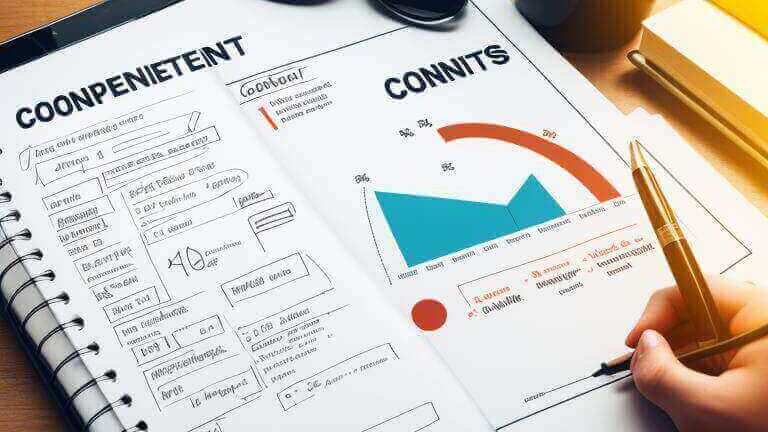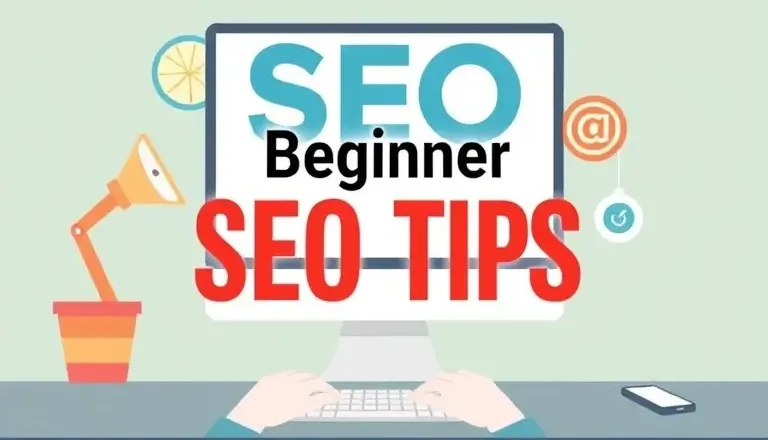Creating a Content Strategy: The Best Tips and Tricks 2025

Table of Contents
A well-crafted creating a content strategy serves as the backbone of successful brand communication in today’s digital landscape. Your brand’s voice, message, and market position all depend on how effectively you plan and execute your content initiatives.
A strategic approach to content creation delivers multiple benefits for your brand:
- Increased Brand Visibility: Consistent, high-quality content helps your brand stand out in crowded digital spaces
- Enhanced Audience Engagement: Targeted content resonates with specific audience segments, driving meaningful interactions
- Improved ROI: A structured content plan optimizes resource allocation and maximizes marketing investments
- Better Lead Generation: Strategic content placement captures qualified leads throughout the buyer’s journey
- Stronger Brand Authority: Regular, valuable content establishes your brand as an industry thought leader
Creating an effective content strategy involves several key components:
- Understanding your target audience through detailed research
- Setting clear, measurable goals for your content initiatives
- Analyzing competitor strategies to identify opportunities
- Selecting appropriate content types and distribution channels
- Establishing consistent creation and publication processes
- Measuring performance and optimizing based on data
Your content strategy acts as a roadmap, guiding your brand’s communication efforts toward specific business objectives. With proper planning and execution, you’ll create content that resonates with your audience and drives meaningful results for your brand.
1. Defining Your Goals and Understanding Your Target Audience
Setting clear goals and understanding your audience creates the foundation for a successful content strategy. Let’s break down these crucial elements:
Setting SMART Goals
Your content goals need structure and clarity. The SMART methodology provides this framework:
- Specific: “Increase website traffic” becomes “Generate 10,000 monthly visitors to our blog”
- Measurable: Track progress through concrete metrics and analytics
- Achievable: Set realistic targets based on current performance and resources
- Relevant: Align goals with your broader business objectives
- Time-bound: Set clear deadlines for achieving these goals
Defining Content Objectives
Different content serves different purposes. Common content objectives include:
- Brand awareness
- Lead generation
- Customer education
- Sales conversion
- Customer retention
- Authority building
Essential KPIs to Track
Match your objectives with specific metrics:
Brand Awareness
- Social media reach
- Website traffic
- Brand mention frequency
Lead Generation
- Email sign-ups
- Content downloads
- Form submissions
Understanding Your Target Audience
Creating detailed buyer personas helps tailor content to your audience’s needs:
Research Methods
- Survey existing customers
- Analyze social media insights
- Review customer support interactions
- Study website analytics
- Conduct interviews
Key Information to Gather
- Demographics
- Pain points
- Goals and motivations
- Preferred content formats
- Online behavior patterns
Persona Development Steps
- Collect data from multiple sources
- Identify common patterns
- Create 2-3 primary personas
- Name each persona
- Document their characteristics
- Share with your content team
Your buyer personas guide content creation, helping you speak directly to your audience’s needs and preferences. Each piece of content should target a specific persona at a particular stage in their journey.
2. Conducting a Content Audit and Analyzing Competitors’ Strategies

A content audit serves as your strategic compass, guiding future content creation through data-driven insights. This systematic review reveals what resonates with your audience and identifies gaps in your current strategy.
Performing an Effective Content Audit
Start by cataloging your existing content assets:
- Blog posts
- Social media content
- Videos and podcasts
- Downloadable resources
- Email campaigns
- Landing pages
Key Metrics to Track:
- Page views and unique visitors
- Time spent on page
- Bounce rate
- Social shares
- Backlinks
- Conversion rates
- Search rankings
- Comments and engagement
Identifying Content Gaps
Create a content matrix to spot missing opportunities:
- Topic Coverage – Map your content against your buyer’s journey
- Content Types – Assess variety in your content formats
- Audience Segments – Check if all personas are served
- Search Intent – Match content with user search patterns
Competitive Analysis Deep Dive
Content Mapping:
- Track competitors’ publishing frequency
- Note their content formats
- Monitor engagement levels
- Analyze content themes and topics
Distribution Channels Assessment:
- Social media platforms used
- Email marketing strategies
- Paid promotion tactics
- Partnership collaborations
Finding Your Competitive Edge
Content Differentiation Strategies:
- Topic Authority
- Develop deep expertise in specific niches
- Create signature content series
- Share original research and data
- Format Innovation
- Experiment with emerging content types
- Combine multiple formats creatively
- Adapt content for different platforms
- Audience Connection
- Foster community engagement
- Personalize content delivery
- Create interactive experiences
Engagement Technique Analysis
Study your competitors’ successful content pieces:
Content Elements to Examine:
- Headlines and hooks
- Visual elements
- Call-to-action placement
- Content structure
- Storytelling approaches
- User-generated content integration
Brand Voice Assessment:
- Tone and style
- Language complexity
- Brand personality
- Cultural alignment
3. Choosing the Right Content Types and Developing a Content Plan

Content creation success lies in selecting diverse formats that resonate with your target audience. Let’s explore the most effective content types and their unique benefits:
Popular Content Formats
- Blog Posts: Perfect for in-depth explanations, SEO optimization, and establishing thought leadership
- Videos: Capture attention through visual storytelling and complex concept explanation
- Infographics: Transform data into visually appealing, shareable content
- Podcasts: Connect with audiences during their commute or daily activities
- Social Media Posts: Drive engagement through bite-sized, shareable content
- Whitepapers: Demonstrate expertise and generate leads through comprehensive research
- Case Studies: Build trust by showcasing real success stories
- Email Newsletters: Nurture relationships with consistent, personalized communication
Selecting the Right Format
Your content format selection should align with:
- Audience Preferences
- Review engagement metrics across platforms
- Analyze competitor success with different formats
- Consider your audience’s daily routines and habits
- Resource Availability
- Assess your team’s skills and capabilities
- Evaluate production costs and time requirements
- Consider outsourcing needs for specialized formats
Creating Your Content Calendar
A well-structured content calendar ensures consistent output and strategic alignment. Here are some tips for creating an effective content calendar:
- Map Key Dates
- Industry events
- Product launches
- Seasonal trends
- Company milestones
- Define Content Mix
- 70% educational content
- 20% promotional material
- 10% entertainment content
- Set Production Timelines
- Content creation deadlines
- Review and approval processes
- Publication schedules
- Distribution plans
Tools for Calendar Management
- Trello: Visual project management tool that’s great for tracking progress.
- CoSchedule: Marketing-specific calendar tool that integrates well with social media.
- Asana: Team collaboration and task tracking software.
- Google Calendar: Simple, accessible scheduling tool.
Your content calendar acts as a roadmap, guiding your team through content creation while maintaining consistency in your publishing schedule. Regular reviews and adjustments help ensure your calendar remains relevant and effective. For more insights on managing a content calendar effectively, consider exploring this guide to content calendars.
4. Establishing a Content Creation Process and Measuring Success Post-Publication
A streamlined content creation process forms the backbone of successful content marketing. Your process needs clear steps, defined roles, and quality checkpoints to maintain consistency and excellence across all published materials.
Creating Your Production Workflow
- Set up content briefs with detailed guidelines
- Define team roles and responsibilities
- Establish review and approval processes
- Create content templates for different formats
- Schedule regular team check-ins
A robust quality control system helps maintain high standards. Implement a checklist covering key elements:
- Brand voice consistency
- Grammar and spelling
- Factual accuracy
- SEO optimization
- Visual elements
- Call-to-action placement
Leveraging Team Collaboration
Cross-functional collaboration enriches your content quality. Subject matter experts bring deep industry knowledge, while creative teams add engaging elements. Tools like Asana, Trello, or Monday.com help streamline this collaborative process.
Analytics Tools for Content Performance
Track your content’s effectiveness with these essential tools:
- Google Analytics – Website traffic and user behavior
- SEMrush – SEO performance and keyword tracking
- BuzzSumo – Social media engagement
- HotJar – User interaction heatmaps
- Mailchimp – Email campaign metrics
Key Performance Indicators (KPIs) to Track for Ongoing Optimization
Your KPIs should align with your content goals. Here’s what to measure:
Engagement Metrics:
- Time on page
- Bounce rate
- Social shares
- Comments
- Click-through rates
Conversion Metrics:
- Lead generation
- Email sign-ups
- Product purchases
- Download rates
- Form completions
SEO Performance:
- Organic traffic
- Keyword rankings
- Backlink acquisition
- Page load speed
- Mobile optimization scores
Set up a dashboard combining these metrics for easy monitoring. Tools like Google Data Studio can create custom reports pulling data from multiple sources.
Performance Analysis Schedule
Create a regular review cycle:
- Daily monitoring of basic metrics
- Weekly engagement analysis
- Monthly conversion tracking
- Quarterly strategy assessment
5. Optimizing Your Strategy Regularly through A/BTesting Techniques and Repurposing Existing Content

Your content strategy isn’t a set-and-forget system – it’s a living, breathing entity that needs regular refinement. A/B testing stands as your most powerful tool for continuous improvement, letting you make data-driven decisions rather than relying on gut feelings.
Essential Elements to A/B Test:
- Headlines and titles
- Content length and format
- Visual elements
- Call-to-action placement
- Publishing times
- Content distribution channels
Start with small changes and test one element at a time. This methodical approach helps you identify exactly which modifications drive better results. Track metrics like engagement rates, time on page, and conversion rates to measure the impact of your changes.
Maximizing Content Lifespan Through Repurposing
Your existing content holds untapped potential. Here’s how to breathe new life into your valuable materials:
- Transform Formats
- Turn blog posts into infographics
- Convert webinars into blog series
- Extract social media snippets from longer articles
- Create podcast episodes from popular written content
- Update Existing Content
- Refresh statistics and data
- Add new industry insights
- Include recent case studies
- Optimize for current SEO best practices
- Adapt for Different Platforms
- Resize visuals for various social media platforms
- Adjust tone and style for different channels
- Create platform-specific versions of your content
- Tailor messaging to specific audience segments
Pro Tip: Create a content repurposing calendar to systematically review and update your existing materials. This ensures no valuable content gets forgotten or becomes outdated.
Remember to maintain brand consistency across all repurposed content while adapting to platform-specific requirements. Track the performance of your repurposed content to identify which formats and channels deliver the best results for your brand.
By implementing regular A/B testing and strategic content repurposing, you’ll maximize the reach and impact of your content while maintaining efficiency in your content creation process. These practices help you build a robust content strategy that evolves with your audience’s preferences and market demands.
Conclusion
Creating a comprehensive content strategy requires dedication, planning, and consistent effort. Your commitment to developing thoughtful, targeted content will set your brand apart in today’s competitive digital landscape.
The strategies outlined in this guide provide a solid foundation for your content journey:
- Setting clear, measurable goals
- Understanding your target audience deeply
- Conducting thorough content audits
- Analyzing competitor strategies
- Choosing effective content types
- Developing structured content plans
- Establishing robust creation processes
- Implementing measurement systems
- Regular optimization through testing
These elements work together to create a dynamic content ecosystem that drives brand success. Remember that your strategy should remain flexible and adaptable to changing market conditions and audience needs.
The path to content excellence is an ongoing journey of refinement and growth. By implementing these strategic approaches, you’ll build stronger connections with your audience, enhance your brand visibility, and achieve your business objectives through content that resonates and converts.
Your brand’s content strategy has the potential to transform your digital presence and create lasting impact. Start implementing these practices today, and watch your content performance reach new heights.
FAQs (Frequently Asked Questions)
What is Creating a Content Strategy and why is it important for my brand?
A comprehensive content strategy is a well-defined plan that outlines how your brand will create, publish, and manage content to achieve specific goals. It is important because it helps ensure consistency, enhances brand awareness, and drives engagement with your target audience, ultimately contributing to overall brand development and marketing success.
How do I define my goals and understand my target audience in my content strategy?
Defining your goals involves setting SMART (Specific, Measurable, Achievable, Relevant, Time-bound) objectives that clarify what you want to achieve, such as increasing brand awareness or generating leads. Understanding your target audience requires conducting audience research and creating detailed buyer personas to tailor your content effectively.
What steps should I take to conduct a content audit and analyze my competitors’ strategies?
Start by reviewing existing content to assess its performance using relevant metrics. Identify gaps in your current strategy for potential growth areas. Analyze competitors’ content strategies to understand their engagement techniques and find differentiation opportunities that can set your brand apart.
What types of content should I choose for my brand and how do I develop a content plan?
Choose diverse and engaging formats based on your audience’s interests, such as blogs or videos. To develop a content plan, create a structured content calendar that aligns with your business goals, ensuring consistent output across various platforms.
How can I establish a content creation process and measure success after publication?
Establishing a streamlined production process involves defining roles within your team and setting quality control measures. After publication, use analytics tools to track performance through key performance indicators (KPIs) that indicate how well your strategy is performing.
What are A/B testing techniques and how can they optimize my content strategy?
A/B testing techniques involve comparing two versions of content to see which performs better based on specific metrics. Regularly optimizing your strategy using data insights from these tests can help refine your approach over time, maximizing reach and extending the lifespan of existing materials.









